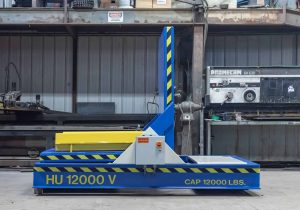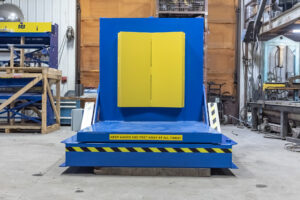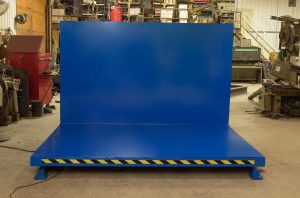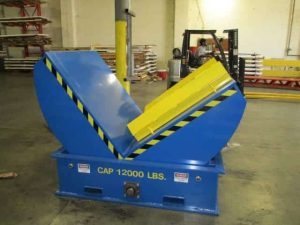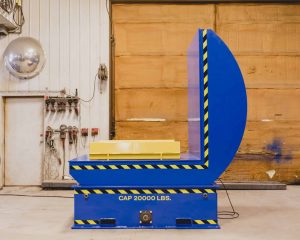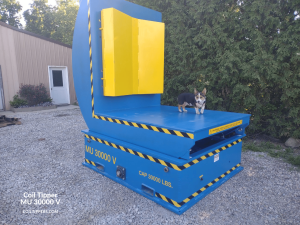In the Monday before Thanksgiving, Kevin Kuntz, the head of supply chain for Gap Inc., was in his office at the specialty retailer’s distribution center in Gallatin, Tenn. Asked how things were shaping up for Black Friday, Kuntz said inventory was flowing through the network just as it should. His team was ready to fill online orders and replenish as needed.
After two crazy years, he said: “It feels like a normal peak season.”
One big reason for Kuntz’s confidence, and the future of Gap Inc.’s fulfillment strategy, is a new facility that opened last summer in Longview, Texas. At 800,000 square feet, it is the company’s sixth facility dedicated to e-fulfillment in the United States, designed from the ground up to service Old Navy’s online customers in the Southwest.
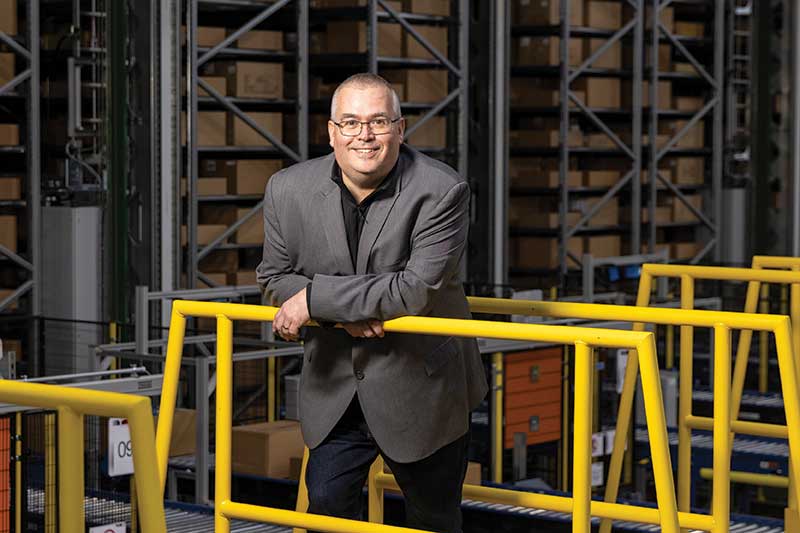
Kevin Kuntz, head of supply chain, Gap Inc.
The facility represents Gap Inc.’s best thinking about e-fulfillment. While the design, automation and systems are similar to Gap Inc.’s other e-fulfillment centers, when it is up to speed, the new facility will get the same amount of throughput in 800,000 square feet—about 1 million units per day—as its Ohio facility does with 1.2 million square feet. It will also be an important node in GPS Platform Services by Gap Inc., the retailer’s new fulfillment offering for other retailers.
Despite being highly automated, items are essentially touched just a handful of times from receiving to shipping, and the flow through the facility is quite simple. It features:
- One-touch receiving: Incoming cases are manually unloaded onto powered, extendable conveyors, after which the cartons are automatically scanned twice to receive them into the warehouse management system (WMS) and capture dimensions so the WMS can determine where the inventory will be stored.
- Mini-load automated storage and retrieval system (AS/RS) and very narrow aisle (VNA) reserve storage: The vast majority of inventory in the building is stored in the mini-load AS/RS. Cartons that were damaged in transit or can’t be handled by the automation are stored in a 35-foot tall VNA area.
- Four-level pick module: Nearly 100% of orders are picked to tote in the pick module, which currently has operations on three levels with a fourth level available for future expansion. Picking is directed by the facility’s warehouse execution system (WES), which is designed to balance the flow of work through the facility so all of the pack stations are kept busy, but without backing up. Associates receive instructions on wearable, camera-based scanners that can simultaneously scan two bar codes—the product ID and a destination label.
- A bomb bay sortation system that sorts items to packing: Single line orders are directed to an autobagger system; multi-line orders are sorted to a robotic putwall or, if they can’t be handled by the robots, to a manual putwall. Currently there is one bomb bay sorter, with plans to add a second bomb bay sorter underneath the first. This will allow Gap Inc. to continue to sort from the top sorter while the second is being installed underneath it.
- A high-speed crossbelt sortation system to feed the shipping area.

Caption: Most incoming merchandise is automatically stored in a mini-load AS/RS
While it’s not in place now, space has been allotted to install a robotic system to automate the returns process at a later date.
The facility went live processing 500,000 units per day, but, according to Kuntz, once the remaining equipment is in place in 2023, it will ramp up to 1 million units per day.
“We have square footage we’re not using that’s available as the business grows,” Kuntz says. “While the building is dedicated now to Old Navy, we could move other brands into the building if that business grows. And, we have the capacity to sign a third-party client in Texas.”
Optimizing the toolkit
Longview is the third Gap Inc. facility we have profiled in Modern Materials Handling. In November 2018, we featured Gap Inc.’s 500,000-square-foot, e-fulfillment distribution center in Gallatin, Tenn., which is one of three buildings on the Gallatin campus. At that time, Gap Inc. was adding the first Kindred robotic putwalls to its automation toolkit.
In January 2021, we wrote about a major expansion of the specialty retailer’s e-fulfillment distribution center in Columbus, Ohio. That project not only added 400,000 square feet of space, bringing the total to 1.2 million square feet, but implemented Gap Inc.’s then-latest thinking about automation. It was the first Gap Inc. building designed to process 1 million units per day during peak.
All three buildings have commonalities with each other as well as other e-fulfillment facilities. When it comes to distribution, the company’s philosophy is to standardize on a design and a technology toolkit and then roll that out across the network over time. In that sense, the retailer’s DCs have a common look and feel, which means a manager, a supervisor or an associate from the Fishkill, N.Y., operation would probably feel at home walking into the Longview DC.
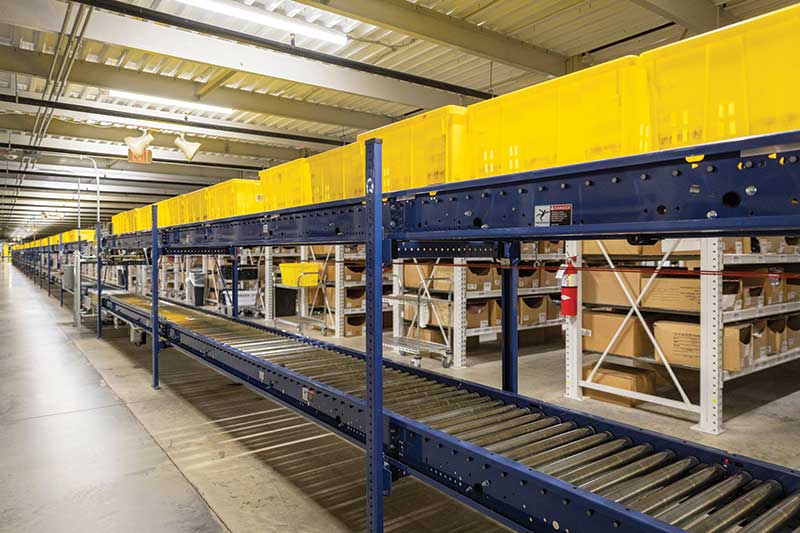
Caption: Totes are conveyed from picking to an induction station
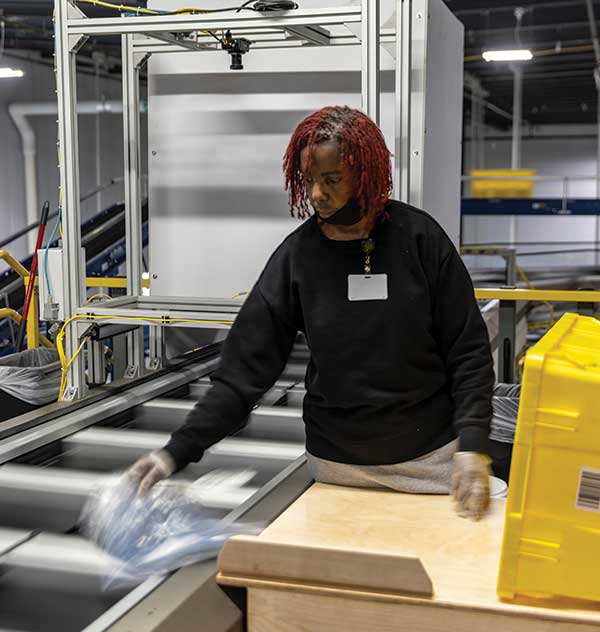
Caption: At the induction station, items are inducted onto a bomb bay sorter
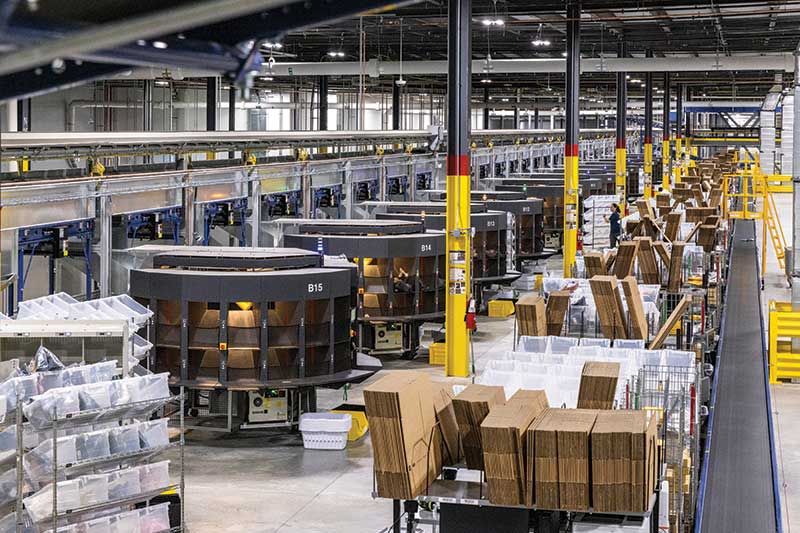
Caption: They are then sorted to the right station in packing
Continuous improvement and innovation are inherent in Gap Inc.’s DNA. Along with serving as a distribution node in the mid-South, the Gallatin facility also serves as an innovation lab where many new technologies are piloted, and then, if they make it through that test, go into production in Gallatin. Once they’ve proved themselves in that environment, they’re rolled out to other facilities.
Robotic putwalls are an example of that approach: A handful of units were installed in Gallatin before the peak season in 2018; since then, Gap Inc. has deployed nearly 250 of the units, including in the new Longview location. They don’t handle everything, but they can handle 60% to 70% of SKUs.
The Longview facility is an example of continuous improvement. The toolkit is familiar, but with a streamlined layout and tweaks to how Gap Inc. operates automated systems, like the mini-load cranes, the retailer will get as much production out of 800,000 square feet as 1.2 million in Columbus.
“You live and learn,” is the way Kuntz describes evolving the design while making use of common tools. “In Columbus, we expanded an existing facility, so there were a lot of workarounds,” he says. “Longview is a greenfield facility, so that allowed us to create a new layout with the right flow from the jump.”
As an example, all the dock doors are on the same side of the building, creating a horseshoe-like flow from receiving to storage to the pick module to packing and finally into shipping.
The design also took employee satisfaction into consideration. The pick module is larger than a conventional pick module, which allows Gap Inc. to avoid using floor locations as pick locations except as a last resort—associates don’t like picking from the floor. Breakrooms were installed on the mezzanines so associates working in those areas don’t have a long walk to the breakroom. Microwaves are spread out across the facility, which reduces the line and wait time to heat up food.
What’s more, not all of the 800,000 square feet is currently in use. There’s room for expansion in the future.
All about the network
Yes, it’s important that operations inside the facility be as fast, efficient and cost-effective as possible. At the end of the day, however, the new Longview facility is all about the network.
Automation may get product onto a truck a little faster, but delivery speed really comes down to how far that parcel has to travel once it leaves the facility to get to the customer. The dramatic rise in e-commerce, even predating the pandemic, along with increased customer expectations, drove the need for the new building and is driving plans that Gap Inc. is putting in place for the future.
“We had a massive shift to online through Covid,” says Kuntz, noting that 39% of Gap Inc.’s sales through the third quarter of 2022 were online. Beyond the pandemic-driven demand, Gap Inc.’s tiered loyalty programs across all brands feature delivery promises, which vary based on the program.
The return of customers to brick-and-mortar stores has slowed the rate of online sales growth, but it hasn’t put a dent in customer expectations.
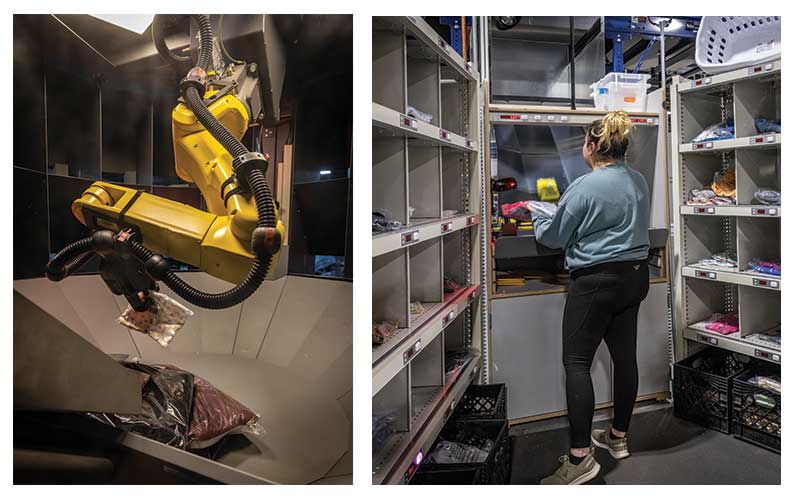
Caption: Single-line orders are automatically packaged for shipment before they’re inducted onto the shipping conveyor.
“What we see is that customers expect to get their orders faster, and that will continue to be the case, so that’s where we’ve focused our energies,” Kuntz says.
During the pandemic, Gap Inc. satisfied some of that demand by turning stores into distribution hubs, rolling out capabilities for buy online/pickup in store and curbside pickup. Those processes solved a short-term problem but are notoriously inefficient.
What’s next for automation at Gap Inc.
Among specialty retailers, Gap Inc. has an earned reputation as an innovator and early adopter of emerging technologies. While a mini-load automated storage and retrieval system (AS/RS) might seem like old news today, that wasn’t the case when Gap Inc. first added the solution to its automation stack years ago.
Kevin Kuntz, the head of supply chain, points out that innovation isn’t always a home run, and any number of pilots have ended without the adoption of a new solution.
Still, the key to innovation success, he says, is identifying quickly whether a technology can be integrated into the flow; creating a team that believes in the technologies that do move forward; and then having the organizational patience to move slow, learn and improve.
Take shuttle systems as an example: “When we put in our first shuttles from TGW, we went from 100% human control to managing 44 shuttles,” Kuntz says. “The first three months weren’t easy, but our organization is really good at change management, and we were able to adapt the management of our flow to meet the need.”
Today, Gap Inc. is taking a leadership role in the adoption of robotics in the retail space. During the 2018 holiday season, for instance, Kuntz’s team installed a handful of Kindred.ai robotic putwalls in Gallatin, Tenn., a facility that is often the company’s laboratory for innovation.
After tweaking and proving out the technology in Gallatin, Gap Inc. began to roll it out across its network. Today, if Gap Inc. isn’t the largest user of Kindred’s technology, it’s close.
What’s next? In 2021, Gap Inc. piloted and is now adopting a robotic storage and retrieval solution from Exotec to optimize returns handling. As with Kindred, the implementation was in Gallatin. At the time of this interview, Gap was finalizing plans for the second implementation.
In the summer of 2022, the retailer completed a pilot in its Fishkill, N.Y., facility with Boston Dynamic’s Stretch robot for automated trailer unloading. The first two units will be deployed in 2023 in Gallatin.
Gap’s expanded adoption of robotics illustrates two trends Modern identified in last year’s survey of readers. The first is that those companies taking the leap and investing in robotic technology are realizing its ROI and, as a result, are investing in more robotic technology.
The second is what Dwight Klappich, Gartner’s robotics expert, has identified as a shift from homogenous robotics to a heterogenous operating environment: Put simply, companies that find success with a single technology, like a robotic putwall, are asking where else can they apply robotics and are investing in different types of the technology—such as Exotec for returns processing and Boston Dynamics for trailer unloading.
While Kuntz says that retail fulfillment centers will always need people, the expanded use of automation and robotics “is inching us closer to a dark environment.”
“We want to maintain store inventory for the store so that inventory is always available,” Kuntz says. “We still use the stores as nodes, but they are a last resort. If we can fill it from a DC, we fill it from a DC.”
Combine the jump in pandemic-driven sales in 2020 and 2021 and the push for faster delivery, and “a new distribution center was sorely needed,” says Kuntz. That was especially true for Old Navy, which is Gap Inc.’s 800-pound gorilla when it comes to online sales.
At the time, Gap Inc.’s e-fulfillment and store replenishment network included two facilities in Fresno, Calif.; one online facility in Phoenix; three buildings in Gallatin, including one dedicated to store replenishment, one to e-fulfillment and one that can do both; two buildings in Fishkill, N.Y.; and the Columbus e-fulfillment center.
A shared network
The new Texas facility serves as an important node to service the Southwest United States as Gap Inc. continues to work on its on-time delivery, especially during peak. But it also adds another fulfillment node for the retailer’s new logistics-as-a-service program.
With this initiative, known as GPS Platform Services by Gap Inc., the retailer is opening its network to other retailers, especially smaller brands and startups. GPS Platform Services will offer e-commerce and B2B fulfillment services, storage and warehousing, parcel shipping and returns processing, and post-purchase experience
“We will use our existing network, intermingling with our own freight and our own building,” Kuntz explains. “We can offer a single node if they’re a smaller retailer, or we can offer multiple nodes and move orders for multiple brands if they want to do that. We already service four huge Gap Inc. brands and segregate and segment that data.”
“We think it’ll be game-changing for brands struggling with fulfillment,” Kuntz adds. “Who better than someone that already owns and understands retail fulfillment? It’s a unique opportunity.”
The Fresno, Fishkill and Columbus buildings were dedicated to Old Navy. Missing was a facility that was close to customers in Southwest states, including Texas, Louisiana, Oklahoma and Arkansas.
“With a Texas location, we realized we could save 500 to 600 miles compared to servicing customers from Fresno or Columbus. We partnered with our transportation team and settled on East Texas,” Kuntz says.
The building was constructed and up and running in near record time, a feat the Gap Inc. team dubs the Texas Miracle. Planning for the facility began in 2020. Construction took place through Covid and the many supply chain shortages. Working through pandemic restrictions required adjustments on the part of engineers, architects and materials handling system suppliers.
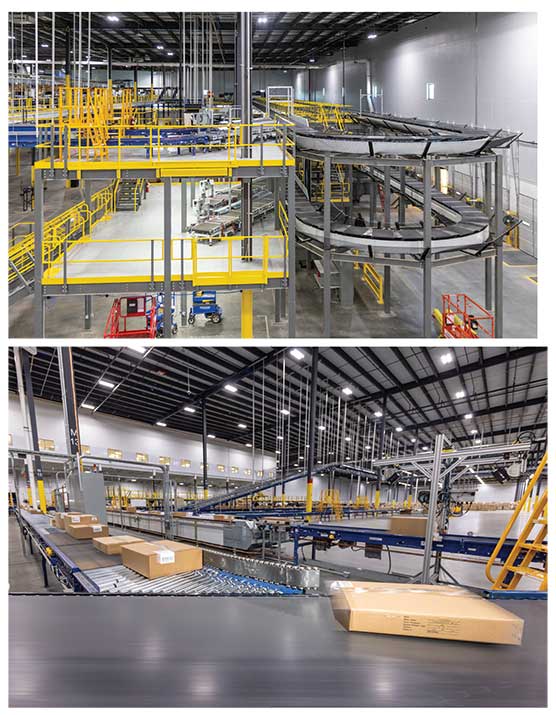
Caption: Gap Inc. uses a two-level bomb bay sorter for greater throughput (top). Packages ready for delivery are diverted to the right parcel line (bottom).
A shortage of roof joists, for instance, necessitated a redesign of the roof system. Then, a shortage of roof fasteners for the insulation slowed down construction. Still, the building was up and running in 18 months.
“There was a challenge a week, but it was fun,” Kuntz says.
Positioning for the future
When Longview is operating at full speed in 2023, processing 1 million lines a day, Gap Inc. will have a powerful fulfillment node to meet customer expectations in the Southwest.
What’s more, unused space will allow the capacity to keep up with demand as the company’s sales grow and as Gap Inc. adds new technologies to its automation toolkit.
Just as important, it provides another avenue for business as the retailer opens its network to other e-tailers. “With four regional nodes, we have the country covered really well, and we have the flexibility to service third-party clients,” Kuntz says. “There are now infinite possibilities of how we service our customers.”


